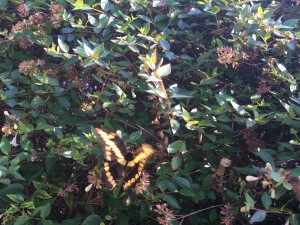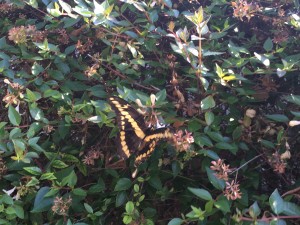During our Costa Rican field course we were able to see a large number of beautiful tropical birds, especially since we explored various rainforests types at multiple elevations. Last week, I was walking around the hike and bike path and look over to see a bunch of what I thought were parakeets. I was taken back to those birding tours we had in Costa Rica!
After I took the picture I did some research on these birds because I did not think Central Texas was in their range. I found out that these were Monk Parakeets (Myiopsittla monachus) and even have their own Facebook page!! The Monk Parakeet, also known as the Quaker Parrots, are native to Central and South America and live in dry open habitats. These birds are gregarious (as can been seen in the picture) and can often be heard before they are seen. The Monk Parakeets are the only species of parrot to build a stick nest, either in a tall tree or manmade structures.
The Austin flock supposedly were first seen in the 1970’s after a few escaped their pet enclosures and have grown in number since. In 2015, the parakeet colony had to find a new home. Many had nests in the lights of UT Austin’s Whitaker Intramural field, which underwent a renovation project. The removal of the nests was done carefully and humanely. The question is…where are the parakeets now? I’ll have to keep up with them on social media!













